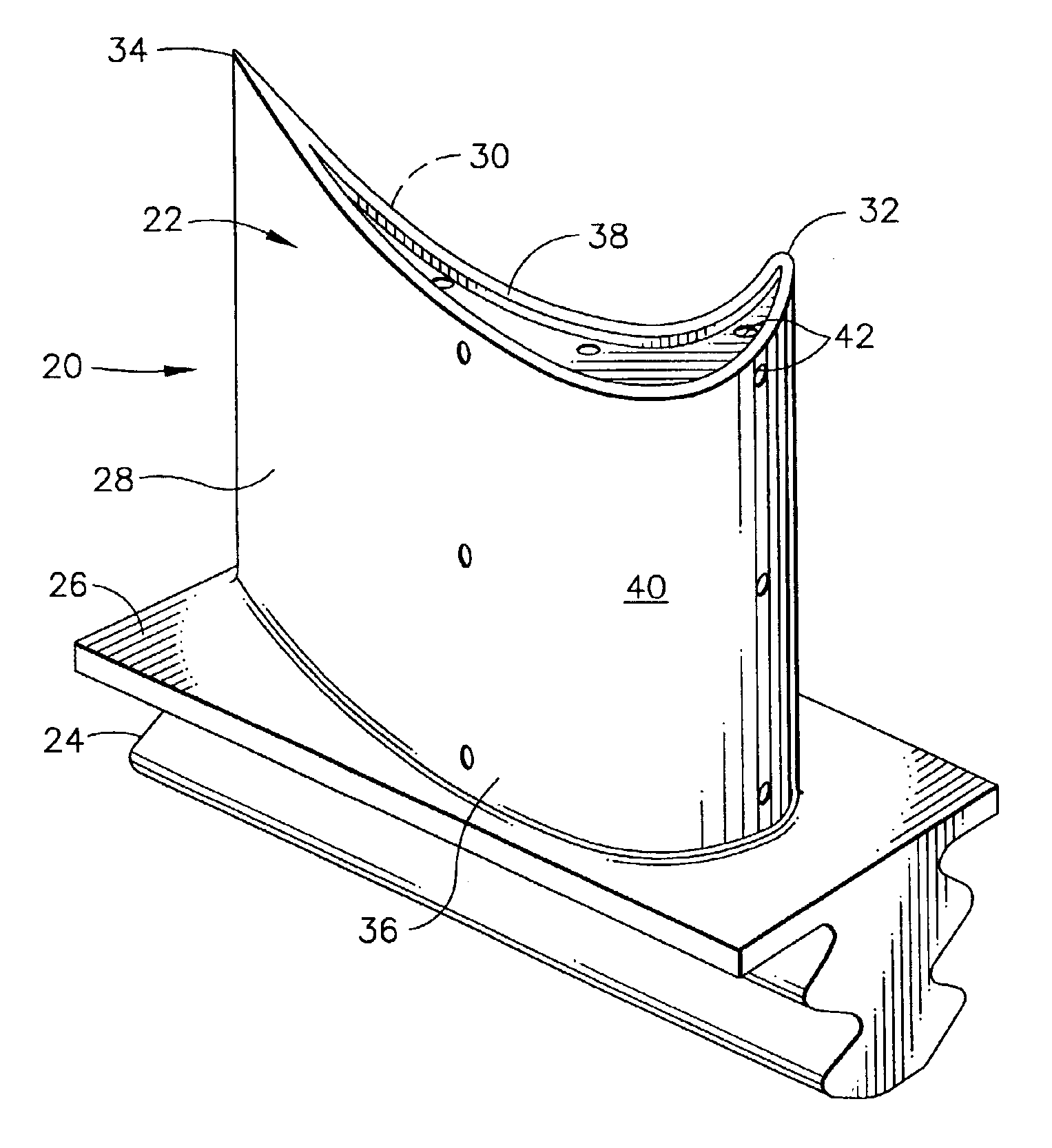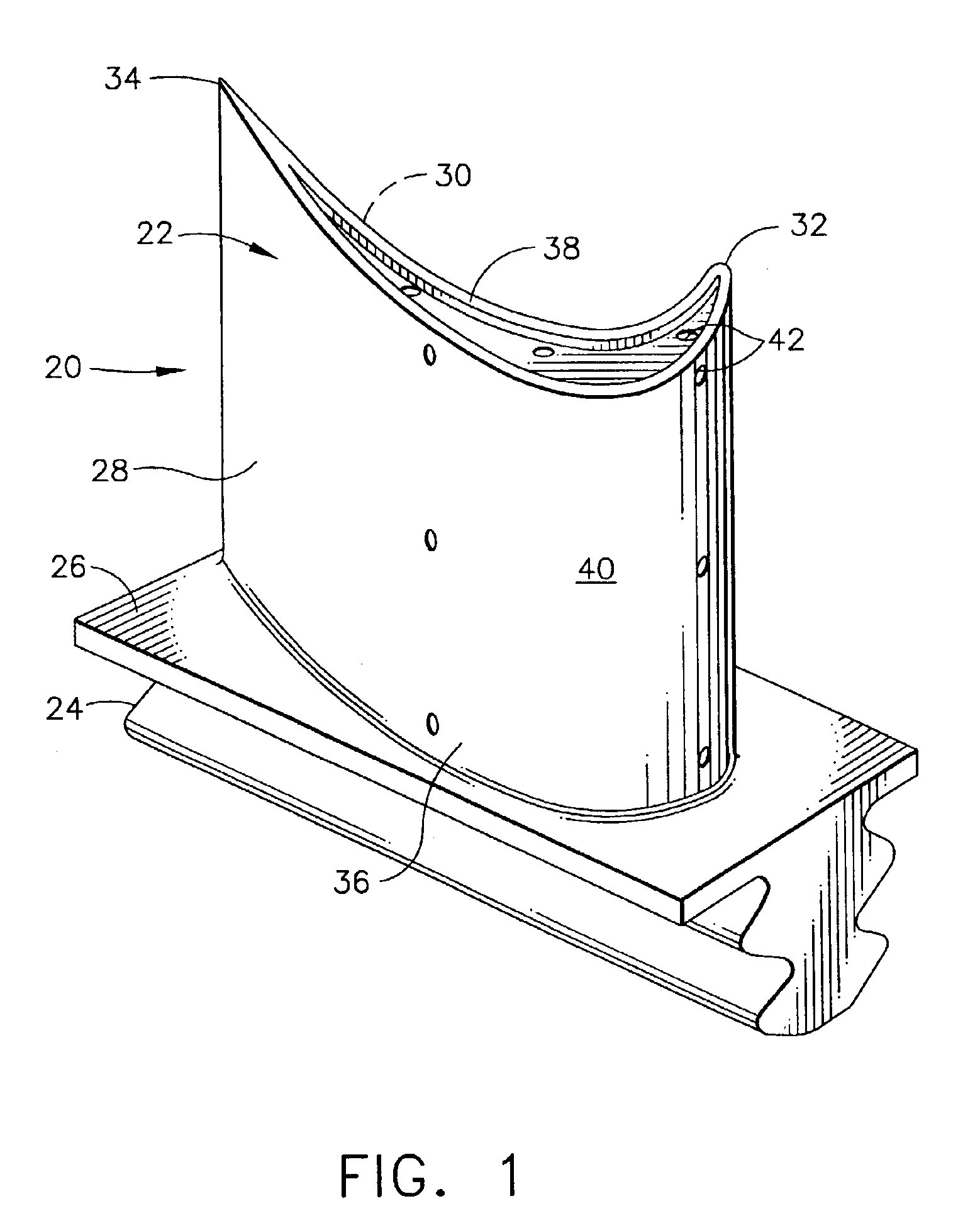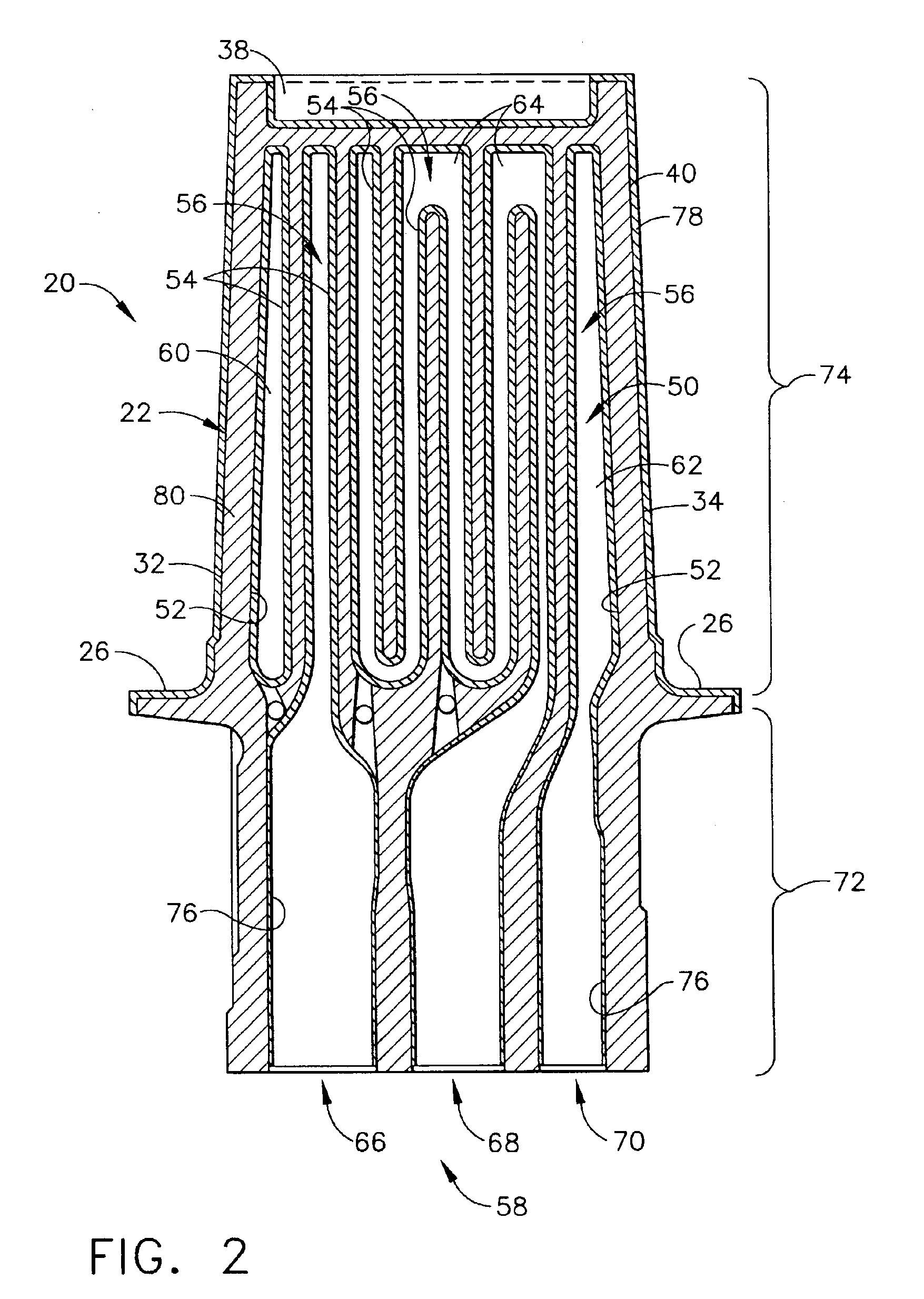Method for aluminide coating of gas turbine engine blade
a gas turbine engine and aluminide coating technology, which is applied in the direction of solid-state diffusion coating, machines/engines, mechanical equipment, etc., can solve the problems of affecting the performance of the engin
- Summary
- Abstract
- Description
- Claims
- Application Information
AI Technical Summary
Benefits of technology
Problems solved by technology
Method used
Image
Examples
example 1
[0045]A two-step process different from the present invention was used to apply an aluminide coating to sample blades in the coating container shown in FIG. 3. In the first step, argon gas was flowed into the coating container to force aluminide coating vapors, formed by reacting aluminum fluoride activator with chromium aluminum alloy pellets as described regarding FIG. 3, to flow through the cooling holes and internal cooling cavities of the blades and out of the dovetail root holes of the blades. In this reverse flow step, an aluminide coating was deposited on internal surfaces of the blades. The thickness of the internal coating and the aluminum content were controlled by the temperature, gas flow, elapsed time of gas flow, and amount of activator in the coating container. In the second step, the argon gas flow to the coating container was stopped, creating a static environment that primarily affected the external portions of the blades and resulted in the deposition of an alumi...
example 2
[0047]Sample blades were coated in the coating container shown in FIG. 3 using a method of the invention. In this method, the coating parameters of Example 1 were altered to deposit a thin, controlled aluminide coating having a thickness of less than 0.0015 inches (about 38.1 microns) on the internal surfaces of all airfoil and dovetail cavities of the blades. In the first step, argon gas was used to flow the aluminide coating vapors through the cooling holes and internal cooling cavities of the blades at a lower temperature. This caused the coating thickness (internal and external) and total aluminum content of the coating to be reduced because of the lower kinetics of diffusion into the substrate. During the second step, the temperature was raised and the gas flow through the internal cooling cavities was reduced to increase the vapor pressure (or activity) of the aluminiding gas and increase the kinetics of aluminum diffusion into the substrate. This resulted in a thicker, higher...
PUM
| Property | Measurement | Unit |
|---|---|---|
| Temperature | aaaaa | aaaaa |
| Temperature | aaaaa | aaaaa |
| Temperature | aaaaa | aaaaa |
Abstract
Description
Claims
Application Information
 Login to View More
Login to View More - R&D
- Intellectual Property
- Life Sciences
- Materials
- Tech Scout
- Unparalleled Data Quality
- Higher Quality Content
- 60% Fewer Hallucinations
Browse by: Latest US Patents, China's latest patents, Technical Efficacy Thesaurus, Application Domain, Technology Topic, Popular Technical Reports.
© 2025 PatSnap. All rights reserved.Legal|Privacy policy|Modern Slavery Act Transparency Statement|Sitemap|About US| Contact US: help@patsnap.com



